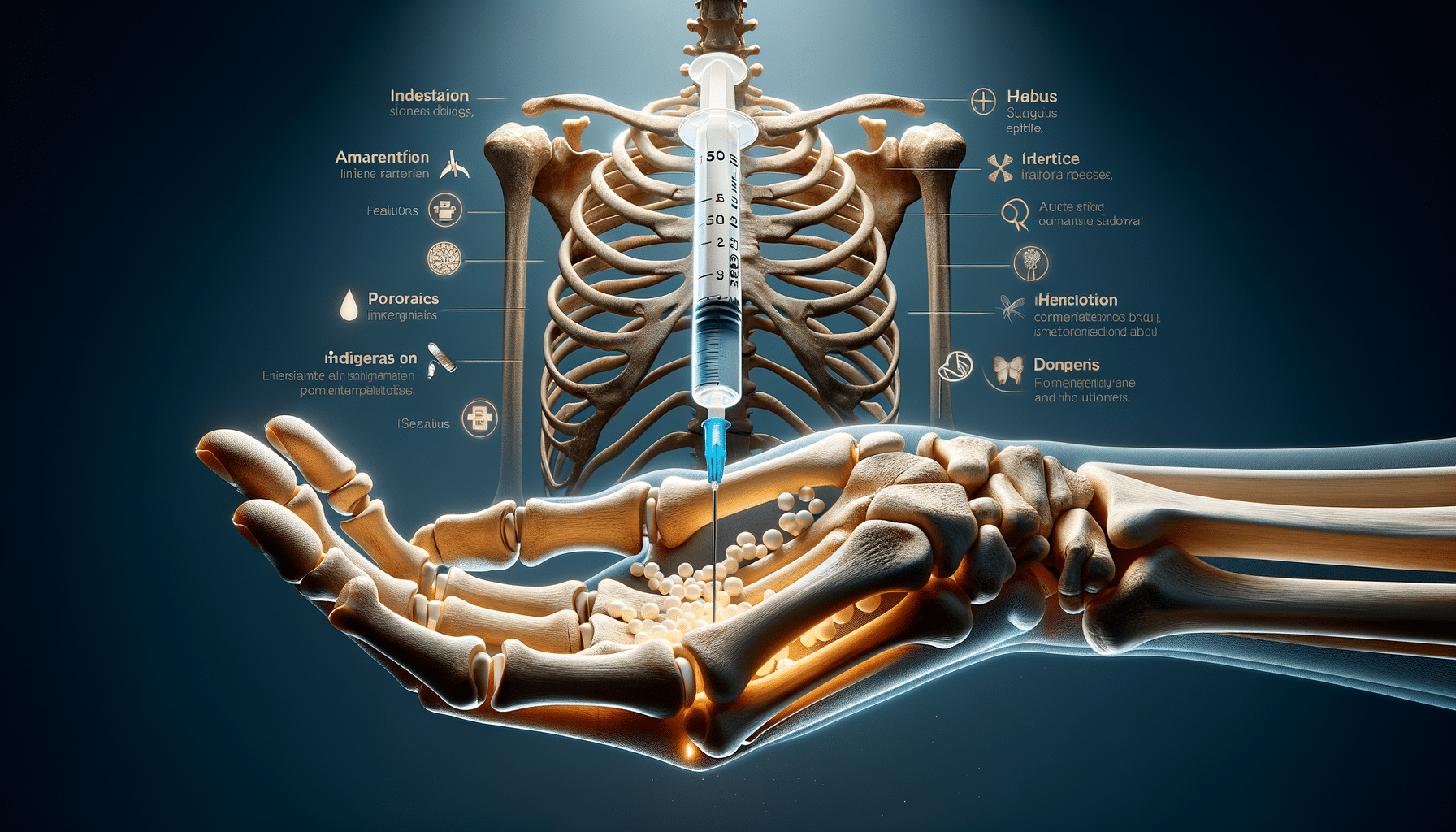
Your Guide to Osteoporosis Injections: Demystifying Potential Side Effects
Introduction to Osteoporosis Injections
Osteoporosis is a condition characterized by weakened bones, making them more susceptible to fractures. To combat this, various treatment options are available, including osteoporosis injections. These injections are designed to strengthen bones and reduce the risk of fractures. However, like any medical treatment, they come with potential side effects that patients should be aware of. Understanding these side effects is crucial for making informed decisions about your health care.
Osteoporosis injections typically include medications such as bisphosphonates, denosumab, and teriparatide. Each of these works differently to help maintain bone density. While they offer significant benefits, it’s important to weigh these against potential risks. From minor issues like injection-site reactions to more serious concerns such as osteonecrosis of the jaw, knowing what to expect can help you manage your treatment effectively.
Common Side Effects of Osteoporosis Injections
When considering osteoporosis injections, it is essential to be informed about common side effects. These can vary depending on the type of medication used. For instance, bisphosphonates may cause gastrointestinal issues, while denosumab can lead to skin rashes or infections. Teriparatide, on the other hand, might result in dizziness or leg cramps.
Injection-site reactions are among the most frequently reported side effects. Patients might experience redness, swelling, or pain at the site of the injection. These symptoms are usually mild and resolve on their own. However, if they persist, it’s advisable to consult a healthcare professional.
Other common side effects include flu-like symptoms, such as fever, fatigue, and muscle aches. These are typically temporary and can be managed with over-the-counter medications. Staying hydrated and getting plenty of rest can also help alleviate these symptoms.
Serious Side Effects: What You Need to Know
While most side effects are mild, there are some serious risks associated with osteoporosis injections that warrant attention. One of the most concerning is osteonecrosis of the jaw, a rare condition where the jawbone starts to weaken and die. This is more commonly associated with bisphosphonates and denosumab, especially in patients undergoing invasive dental procedures.
Atypical femur fractures are another potential risk, particularly with long-term use of bisphosphonates. These fractures occur with little or no trauma and can be challenging to heal. It’s crucial to discuss the duration of your treatment with your doctor to minimize this risk.
Hypocalcemia, or low calcium levels in the blood, is a concern with denosumab. Symptoms include muscle spasms, cramps, and tingling in the fingers. Regular monitoring of calcium levels is recommended for patients on this medication.
Balancing Risks and Benefits
Deciding on osteoporosis injections involves balancing the potential risks against the benefits. For many, the possibility of reducing fracture risk outweighs the side effects. However, it’s essential to have a comprehensive discussion with your healthcare provider to understand your specific risk factors and treatment goals.
Considerations such as age, overall health, and the severity of osteoporosis should guide your decision. It’s also important to discuss lifestyle factors, such as diet and exercise, which can play a significant role in managing osteoporosis alongside medication.
Regular follow-ups with your doctor are crucial for monitoring your response to treatment and adjusting your regimen as needed. This proactive approach can help mitigate risks and enhance the effectiveness of your osteoporosis management plan.
Conclusion: Making Informed Decisions
Understanding the side effects of osteoporosis injections is vital for making informed healthcare decisions. While these treatments offer significant benefits in reducing fracture risk, being aware of potential side effects allows you to manage them effectively.
Open communication with your healthcare provider is key. Discuss any concerns or symptoms you experience during treatment, and don’t hesitate to seek a second opinion if needed. By staying informed and proactive, you can make the best choices for your bone health and overall well-being.
Remember, managing osteoporosis is a journey, and being equipped with the right information is your strongest ally.


